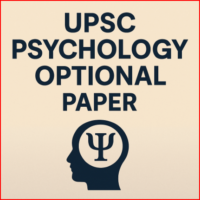Housing for All
Housing For All (HfA) by 2022:
-
- The Union government launched the PMAY (Pradhan Mantri Awas Yojana) scheme in 2015 with the goal of achieving Housing for All by 2022, targeting both urban and rural areas.
- Objectives of the PMAY Scheme:
- The scheme’s objectives include rehabilitation of slum dwellers with private developers’ participation, affordable housing for weaker sections through Credit Linked Subsidy Schemes (CLSS), affordable housing in partnership with public and private sectors, and subsidy for Beneficiary-led Construction (BLC).
- Current Status and Shortcomings:
- Despite two additional years for completion, Housing For All remains a distant reality. PMAY-Urban was extended to December 31, 2024, to finish already sanctioned houses.
- The government’s estimates suggest a shortage of around 20 million houses in rural areas and 3 million in urban centres. However, the urban shortfall may exceed 60 lakh houses, indicating the scheme’s failure to meet the original goals.
- Data from the PMAY dashboard as of April 15, 2023, shows a shortfall of around 40 lakh houses from the sanctioned and completed segments. The In-situ Slum Redevelopment (ISSR) segment has fallen short, with only 2,10,552 houses sanctioned.
- A report by Newslaundry noted that PMAY-Urban has only addressed about 25.15% of the housing shortage, and even if all remaining sanctioned houses are constructed by 2024, it would only cover about 37% of the actual need, leaving almost 2.4 crore households without housing.
- Challenges and Hindrances:
- The policy relies heavily on private sector participation to bridge the public investment gap in social housing. However, private sector involvement often creates issues due to increased costs and inappropriate building designs.
- Land availability is a significant barrier, with spaces registered under airports, railways, and forests being unavailable for ISSR. Plans for ISSR often lack community involvement, relying on consultants.
- The dichotomy between city master plans and PMAY-U causes additional challenges. City plans dictated by consultants favor large capital-intensive solutions, which do not align with social housing needs.
- The government’s financial contribution to PMAY-U is just about 25% of the overall investment expenditure, with the beneficiaries themselves shouldering about 60% of the cost.
- Issues with Implementation:
- The architecture of PMAY does not adequately address the needs of the landless and the poor. About 62% of sanctioned houses fall under the BLC vertical, where government involvement is limited to cost sharing, while CLSS covers 21%.
- Slum-dwelling families slated for rehabilitation under ISSR make up only about 2.5% of the total beneficiaries. This shows a clear gap between policy and actual implementation, leaving many without adequate housing.











